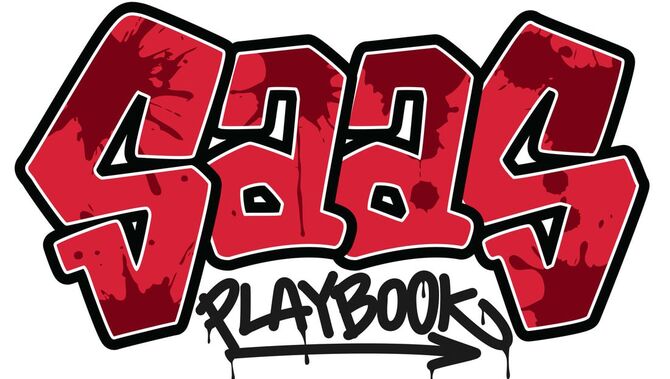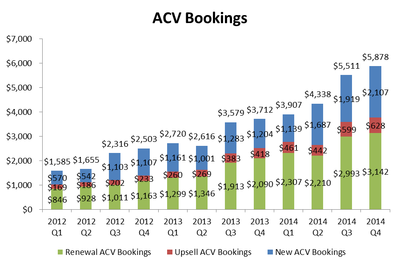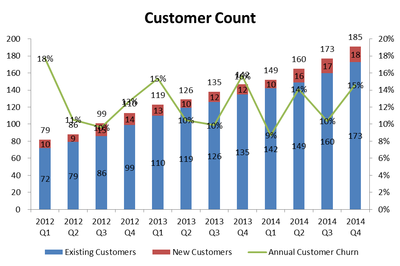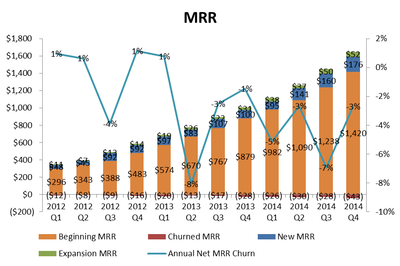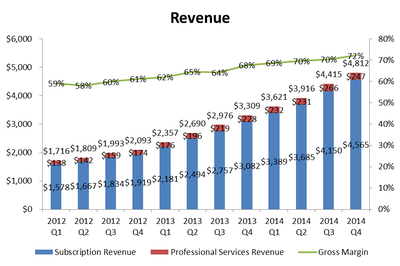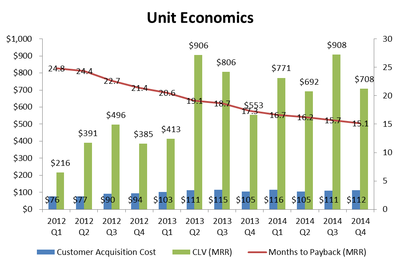|
As the resident data guru at Emergence, I receive weekly requests for help from portfolio companies and startup CEOs. What metrics should I be tracking? What metrics should I display in my board decks? How should I benchmark myself versus other SaaS companies? Unfortunately, there is no one size fits all answer as each company should have unique KPIs they target and track. Establish Company Objectives and Measurable Targets My personal philosophy is to break company objectives into measurable targets and then show the plan versus results over time. Objectives and targets should always be broken down into their most relevant components. For example, let's say you want to have a sales goal. You should not have your sales goal be a total bookings target. In a SaaS business, renewals make up an increasing % of bookings over time and thus you can miss your new bookings target by 50% (a bad miss) but only miss your total bookings by 10% (if your renewals make up 80% of total bookings). In this particular case, You should establish and track separate targets for new bookings and renewal bookings. Further, you probably want to track ACV (annual contract value) bookings as opposed to total new bookings (as multi-year contracts could enable you to hit targets but would not translate into revenue that year). Cohorts! My second most important tip is to break data into relevant cohorts. The most common groupings for cohorts are customer type (industry, size, location), date of acquisition (monthly, quarterly) or method of acquisition (marketing, referral, organic, etc.). Segmenting customers into cohorts enables the higher level analysis which leads to strategic decision making. Using our example from above, you might consider having separate new ACV bookings targets for small/medium and enterprise customers. You may establish renewal bookings targets that differ by the age of your cohorts (in a given quarter, older cohorts should have higher retention than newer cohorts). Lastly, you should have different bookings targets by acquisition channel to incentivize the sales and marketing behavior which generates highest CLV (customer lifetime value). Revise and Repeat Once you've established your targets, it is important to track results and then revise your estimates as strategic objectives change. Continuing with our bookings target example, if you miss on new ACV bookings, then you should quickly determine why you missed (by looking at the cohort data) and revise targets. Let's say you missed new ACV bookings because the organic channel lagged expectations. You could decrease your organic target for the next quarter while simultaneously increasing marketing spend and the new ACV target from customers acquired through marketing. The Dashboard Now that I've explained why each SaaS company should have their own custom dashboard for their business, I present to you my generic SaaS dashboard (attached at the bottom). Oh, sweet irony! All kidding aside, I've created this dashboard over a couple of years and it includes best practices for how to calculate the high level metrics every CEO should track. You should definitely take these basic building blocks and customize the dashboard to meet your specific needs. Questions? Tweet at me or shoot me an email.
Comments are closed.
|
Sign Up to Receive Posts via Email
All
|
||||||
